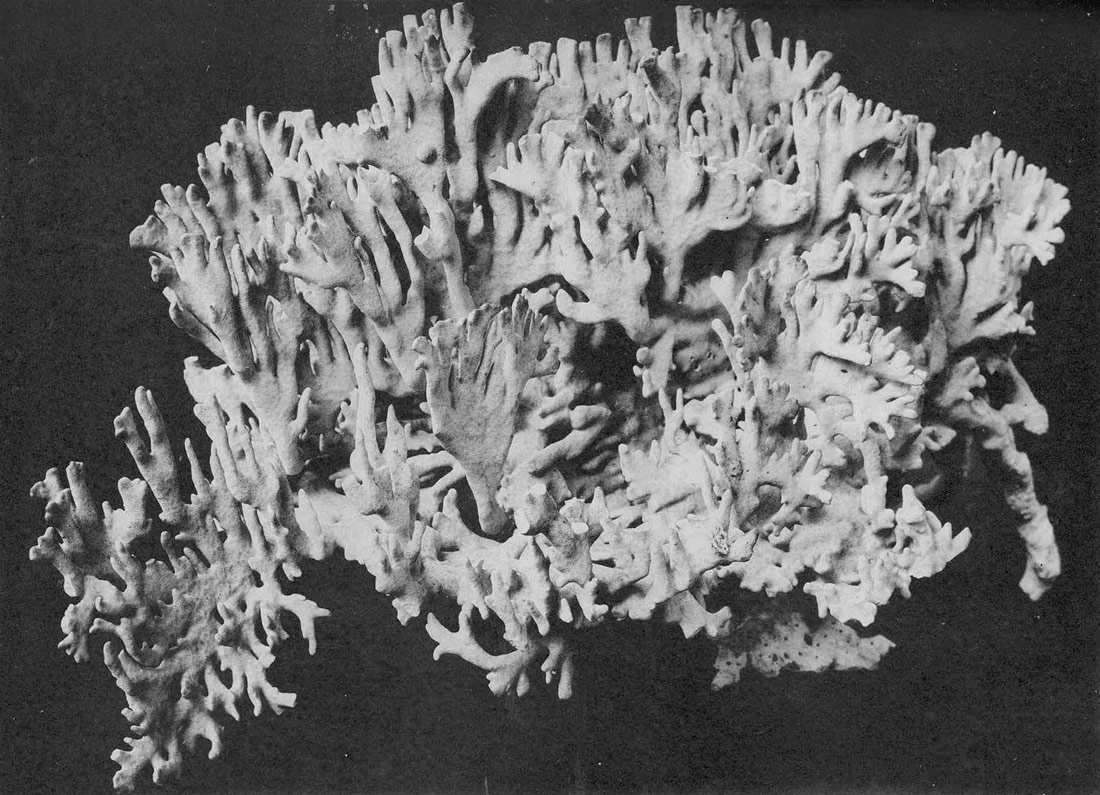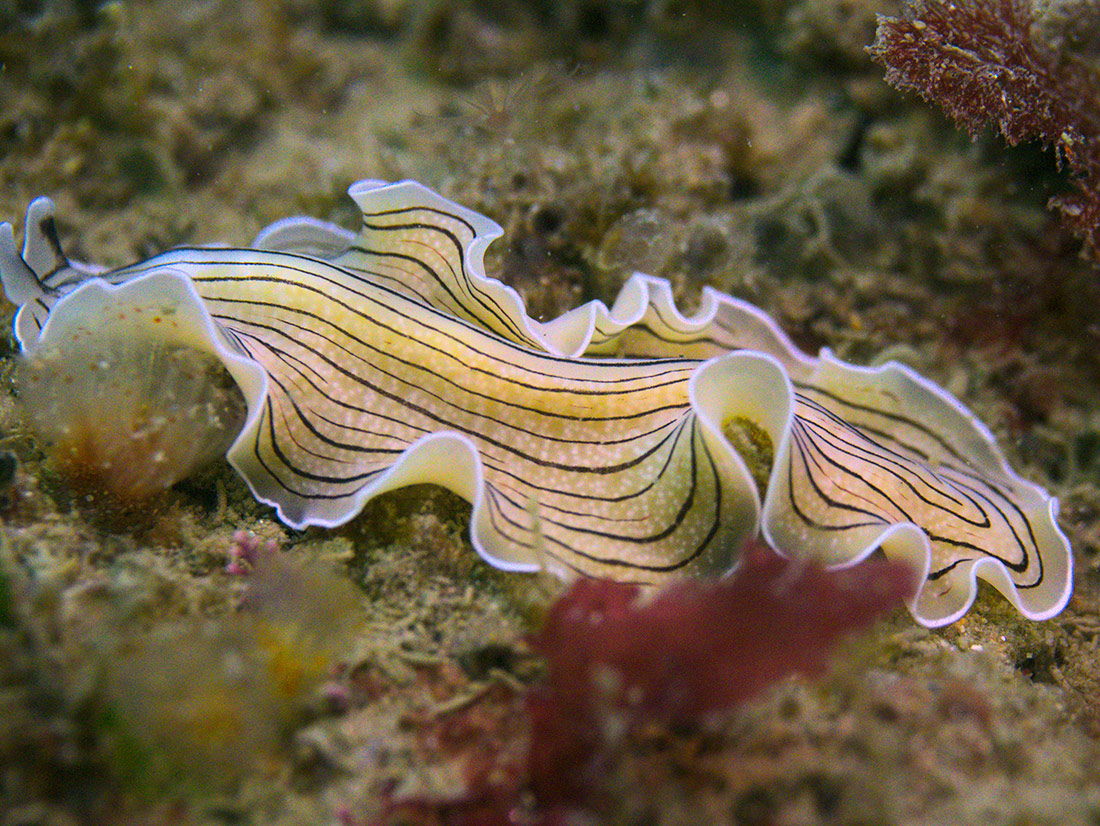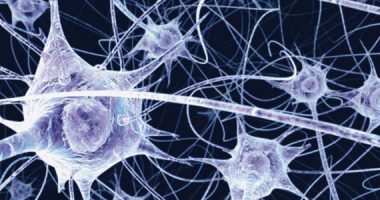
Millepora Alcicornis Linn, 1902 | T. Wayland Vaughan, University of Washington Libraries | Public domain
To what extent can we find evidence of a certain mental presence in the world of living beings? Is it possible to programme an artificial consciousness? Science writer Philip Ball explores the limits of the mind in this text that forms part of the catalogue of the exhibition “Brain(s)”.
We take it for granted that other people have minds, because really we have no choice: we cannot get inside them to check. This is not blind faith, however – for it would be a strange coincidence indeed if other brains looked and functioned just like ours, and other people follow the same behavioural rules, while other beings did not experience much the same kind of world, with all its sensations, experience and emotions, fears and fantasies, as ours.
But if it does not seem too much of a stretch to imagine ourselves into the minds of others, this feat of mental projection becomes much harder if we try to do it with other species. We might imagine what it might feel like to soar like a bird, ply the deep oceans like a whale, or use echolocation like a dolphin, but all that really amounts to is pouring our own cogitation into an animal-shaped vessel.
Given that our experience is by definition solipsistic – we can travel to Madrid and Madras, but can never leave our own cranium – how do we even start to think about nonhuman minds?
To answer that question, minds that seem to be very different from ours may be the most revealing. While few animal behaviourists would now doubt that our closest primate relatives, such as chimpanzees, bonobos and gorillas, have kinds of minds – most probably experiencing some sort of emotion, empathy and consciousness – this very kinship prevents us from penetrating far into the nature of other minds. It might be quite wrong to suppose that the minds of primates are just like ours with the dials turned down, but the affinities are evident, not just from subjective impressions but as careful experiments show. If we want to contemplate minds that are rather different yet still impressive in their cognitive skills, those of birds offer a good example. It seems likely that these skills differ much more widely than do the mental attributes of great apes (including us) – bird minds seem likely to be scattered widely in the space of possible minds.

Three monkeys at the zoo, 1936 | Willem van de Poll, Nationaal Archief | Public domain
But let’s push still harder at the boundaries of what might be considered mind-like. How far in the living world can we move away from humans and still find evidence of mindedness? Can we even move beyond the biological realm altogether?
Cephalopods – octopuses and squid in particular – have long seemed too strange to match our preconceptions about where minds might reside. There’s no hint of affinity or shared experience in those speckled eyes, their slit-like pupils looking to us more like grimacing little mouths. Cephalopod physiology is utterly different to anything we find in mammals, fish, reptiles or other vertebrates, having a nervous system wired to a bizarre and puzzling plan. Octopuses have around 500 million neurons in their bodies: comparable to the number in many dogs. But most of the neurons are spread throughout the body, particularly in the arms, where they form knot-like clusters called ganglia connected by a sparse web of connecting nerves that runs along and around the body somewhat like a ladder. The ganglia seem to act a little like mini-brains, autonomously controlling the respective arms while fed with information from their touch sensors. Octopuses have a central brain in the front of the body, but its structure is very different from that of mammals, organized into around 40 lobes.
These differences reflect our evolutionary distance. While the common ancestor we share with most big-brained animals was a reptile that lived around 320 million years ago, our branch of the evolutionary tree diverged from that of cephalopods fully 600 million years ago, the common ancestor a kind of flatworm with very simple neural circuitry. Cephalopods thus represent an almost entirely distinct evolutionary trajectory for building intelligence. Philosopher Peter Godfrey-Smith says that our encounters with them are “probably the closest we will come to meeting an intelligent alien.”

Common octopus at Palma Aquarium, 2009 | CC BY-NC-SA Morten Brekkevold
Octopuses surely are intelligent. They possess memory, problem-solving ability, even cunning and personality. They have an exploratory nature, engaging with novelty in an open-ended way yet devoid of any immediate purpose or agenda we can discern. They figure out how to unscrew jars, navigate mazes, fuse laboratory lights with jets of water (they don’t like brightness), escape from their tanks at the very moment their human wardens aren’t looking. They appear to hoard items they find interesting, even if these lack any obvious use. Some researchers think such inquisitiveness might be one of the hallmarks of complex minds.
Octopuses are not naturally social beings: each ploughs its own furrow in the marine underworld. It’s almost as if cephalopods as having oddly sophisticated means of expressing themselves while having rather little to express, or anyone to express it to. The relatively solitary existence of cephalopods might in itself be expected to produce rather different sorts of mind from a highly social creature like us.
Our habitual division of mind and body looks increasingly unhelpful for understanding human cognition, but it makes no sense at all for cephalopods. The body has, if not a mind of its own, then a set of proto-minds in each arm that make their own decisions. The arms can be guided by the creature’s eyes, but much of their movement seems to happen of each arm’s own accord, informed by its touch and chemical sensory systems. The limbs seem even to possess some degree of short-term memory. We’re not even sure if the octopus “knows” what its arms are doing; perhaps to some degree they just “watch” the arms perform as if observing another creature: like several beings in one body. “Unity”, Godfrey-Smith concludes, “is optional, an achievement, an invention. Bringing experience together… is something that evolution may or may not do.”
The mental sophistication of cephalopods suggests that the origins of mind and sentience may have been located much earlier in evolutionary history than we might guess from looking at other large-brained creatures such as mammals and birds. Specifically, we might need to locate it at least as far back as that divergence of vertebrates and molluscs 600 million years ago. That primitive, flatworm-like common ancestor possessed only a rather simple nervous system; genuinely brain-like structures evolved later.

Prostheceraeus vittatus, 2014 | Erics, Wikimedia Commons | CC BY-SA
Why did nervous systems develop in the first place, given that life (such as bacteria) is possible without them? One theory supposes this was related to what was going on inside the organism. As bodies became multicellular and specialized into different tissues, organs and appendages, each with particular functions, the actions of these components needed to be coordinated and synchronized so that the organism worked as a coherent whole – so that was not, metaphorically at least, tripping over its own feet. Communication between relatively distant parts of the body requires a network of neuronal ‘wires’ that can transmit a targeted signal quickly and accurately.
The other possible reason to acquire a nervous system is external to the organism: in order to sense what’s all around. Once organisms became mobile, they needed to find their way around, in particular to look for food – and to look out for predators.
When did the nervous control system change from being an automated, stimulus-response, sensing-and-control network to becoming a mind – a system with sentience? Neurobiologist Simona Ginsburg and evolutionary biologist Eva Jablonka have suggested that the “transition to experiencing” was a very gradual affair. No creature suddenly woke up to itself, and indeed the kind of mindedness they imagine to have first evolved is more like “overall sensation”: a unified internal representation of the organism’s situation, yet lacking any sense of self or awareness.
Such integrated sensory states could have arisen as nervous systems became increasingly interconnected into a “nerve net” in ancient creatures similar to those in today’s cnidarians (such as corals, sea anemones and jellyfish) and ctenophores (such as comb jellies). Stimulate one part of this net, and the neural activity spreads throughout it. Eventually these neural patterns convey an “experience” with positive or negative valence, depending on whether they indicate circumstances that are good or bad for survival. At that point there is something (however faint or indistinct) it was like to be the organism.
We can imagine stretching the view of what a mind might be even further across the living world. The ability to receive information from the environment and to adapt behaviour accordingly is shared by even the most primitive of organisms, such as single-celled bacteria, and it is abundantly evidenced in plants. Until recently, however, most biologists maintained that this is merely automaton-like activity, and that no living entity without nerves – that’s to say, nothing that is not an animal – can possess a mind.
But neurons have no monopoly on communicating with one another. Other kinds of cell can and do exchange information, typically by passing small “signaling” molecules between them rather as neurotransmitter molecules signal across neural synapses. This allows cells to form communities or networks capable of information-processing: computation. The question is when such coordinated cell activity merits being described as truly mind-like. Some biologists now argue that mindedness is an inherent property of most, perhaps all, living systems.
These suggestions have been made most forcefully for plants. They are a totally different kind of organism from animals, with no nervous system and rooted to the spot. But plants show plenty of evidence of purposeful behaviour. If a root encounters some impenetrable object like a stone, it switches course. Plants may slowly turn to keep facing the sun as it passes overhead; at the end of the day, flowers gently fold in a manner that we even tell small children is “going to sleep”.

Mimosa pudica, 2012 | CC BY Manuel M. V.
Plants are much more than automata enacting a simple program. They make decisions, and seem to do so on the basis of learning, as demonstrated by plant biologist Monica Gagliano for pea plants. One of the most “animal-like” responses of plants is that of the flowering perennial Mimosa pudica, a member of the pea family native to South and Central America. Pudica is Latin for bashful or shy, because the plant’s leaves fold inwards when touched or shaken, like a creature coiling up to protect itself from harm: the plant is also known as “sensitive” or “sleepy” plant, and as “touch-me-not”.
Plants cells can communicate via electrical signals that propagate along the phloem: channels made from back-to-back cells. The phloem are traditionally thought of as the transport network for sugars that the cells need for metabolic processes – loosely analogous to our own vascular system for blood flow. But they can also act as “green cables” that carry electrical signals. Some have argued that plants can even experience something like pain: a feeling of aversion towards things that threaten their well-being and integrity.
Similar arguments for mindedness have been made for fungi – and here a comparison with the sprawling, interactive and communicative networks of nerve cells is perhaps even more suggestive. The mushrooms that sprout in woodlands are merely the so-called fruiting bodies of vast networks of fungal filaments that extend in microscopic labyrinths through the soil and vegetation. Many fungi grow as webs of mycelium, a kind of connective tissue that spreads not only in soils but in coral reefs, in our bodies and those of other animals, in damp houses and under urban pavements and roads. The mycelial strands are called hyphae, typically five times thinner than a human hair, that extend through ecosystems and digest and absorb nutrients, conveying them from cell to cell along these intricate, sprawling transport systems.
Fungal hyphae, like plant cells, can generate and transmit electrical impulses, again resembling neuronal action potentials. Some researchers argue that the information transmitted in this way along fungal networks make them capable of intelligent behaviour, memory and cognition: in short, that the networks show some analogies with brains. The notion of plant and fungal minds remains not just unresolved but perhaps unresolvable. That doesn’t make it pointless, though; on the contrary, it forces us to grapple with central questions about what a mind can be.

Fungi at Killarney Provincial Park. Ontario, 2008 | CC BY-NC Eric Parker
Some researchers suspect that the very existence of electrical sensitivity imbues individual nerve cells with the ingredients of sentience. Informatics expert Norman Cook has suggested that a nerve cell, by opening up its membrane to the inflow or exodus of charged ions that creates a voltage, breaks the hermetic seal by which living cells distinguish their interior from the outside – and that this opening up to the environment is sufficient in itself to generate a “proto-feeling”. Brains, minds and cognition are, in this view, an aggregate of “atoms of sentience” in individual, excitable cells. The implication is that perhaps there might even be something it is to be like for a single neuron.
Some biologists assert that mindedness is in fact a fundamental property of all living things, a position called biopsychism. In this view, all organisms have minds of sorts merely by virtue of being alive. Biologist Lynn Margulis and her son Dorion Sagan asserted in 1995 that “Not just animals are conscious but every organic being, every autopoeic [self-creating] cell is conscious. In the simplest sense, consciousness is an awareness of the outside world.”
While the idea that merely being alive is a sufficient criterion for consciousness is still a minority position, some researchers suspect that life may be necessary condition for consciousness. That’s to say, they doubt that machines will ever have what it takes to become aware or sentient, simply because they are not made of the right stuff. “Just making computers smarter is not going to make them sentient”, says neuroscientist Anil Seth. “My intuition is that the materiality of life will turn out to be important for all manifestations of consciousness.” He suspects that sentience depends on the way that the characteristic drive for self-regulation and self-maintenance in living organisms is expressed at all levels from the cell to the organism; it won’t be enough just to program such attributes algorithmically into a machine. The idea popular in Silicon Valley that consciousness “is just a clever hack away” is a fantasy, according to neuroscientist Christof Koch.
We don’t know if this is true or not – if genuine mindedness, characterized by some degree of awareness, will forever remain beyond the reach of our technologies. There is, after all, no litmus test for it (although some researchers are thinking hard about how one might be devised). The famous “imitation game” or Turing Test devised by British mathematician measures only how well artificial intelligence can create a simulacrum of a mind – and we, evolved to live among minds, are all too apt to project mindedness into places where it does not exist. In the end, we don’t understand minds (including our own) well enough to draw confident conclusions about where they can reside.
But thinking about a “space of possible minds” might clarify some of the arguments about the limits of mind in the living and the technological worlds. if we recognize minds as having various capacities to a greater or lesser degree – learning, memory, integration, consciousness – then we can place such entities somewhere in this conceptual space, even if we decide to set them to zero on the coordinate grid that somehow represents the parameters of consciousness and feeling. Whether that admits them as real “minds” seems less relevant than being able to construct such a comparison with other minds, and to acknowledge some of the properties they share with them. The goal is not in the end to guard the gates of any Mind Club, but to explore what is out there.





Leave a comment